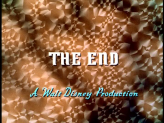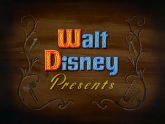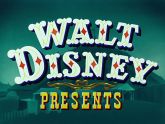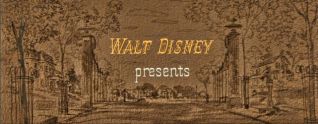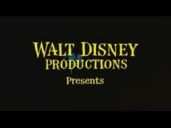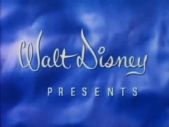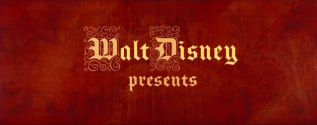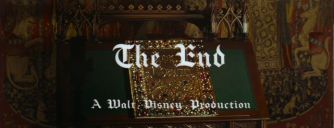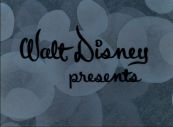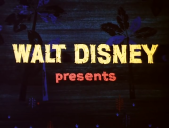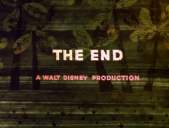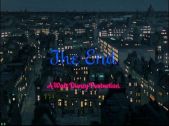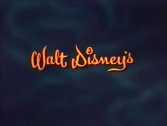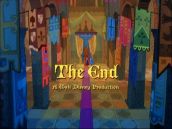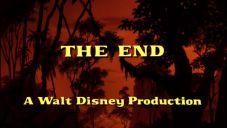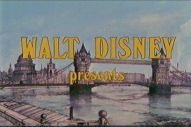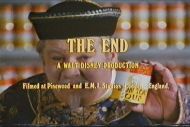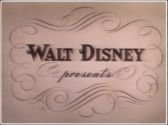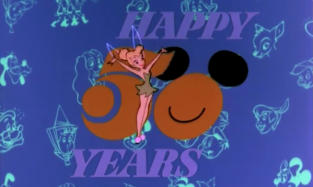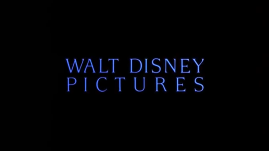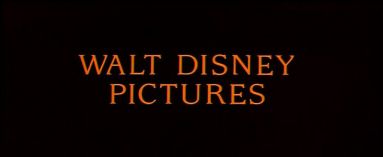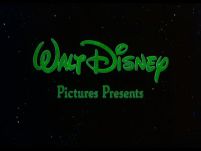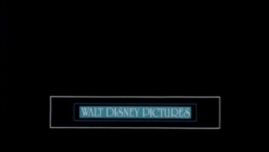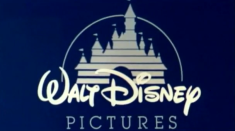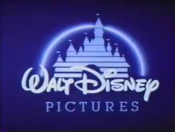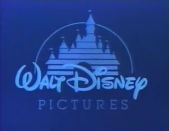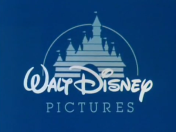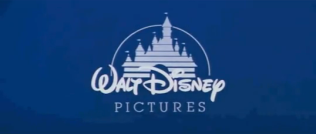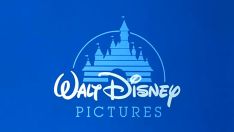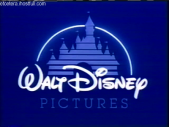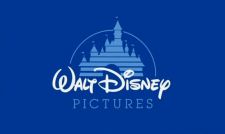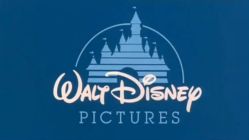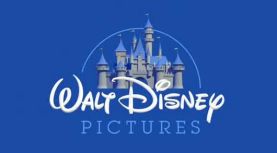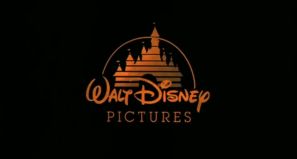Walt Disney Pictures
Jump to navigation
Jump to search
Logo descriptions by Matt Williams, WileE2005, rjsmith09, Matt Anscher, and indycar
Logo captures by Eric S., iheartparamount, indycar, DaffyDuckScrewball, yctheguardie, and others
Editions by Bob Fish, V of Doom, mr3urious, Nathan B., Optimus Prime 2000, userjt, universalxdisney172, shnick1985, HiddenResearcher, McDonald's1, indycar, KPLN, JakeWilliams025, iheartparamount and Unnepad
Variants:
3rd Logo
(October 7, 1983-December 25, 1998)
Logo: Again, just text reading "WALT DISNEY PICTURES", but applied differently depending on the movie.
Variants:
Variants:
Editor's Note: Probably the most beloved Disney logo, due to its longevity and appearing at the front of the studio's classic films.
Editor's Note: A nice CGI update of the 1986 logo, which is fondly regarded by fans of older Pixar movies.
Nicknames: "Hidden Disney Castle", "The Flare", "The Disney Castle III", "The Flashlight", "Golden Disney Castle"
Logo: On a black background, we see the orange text "WALT DiSNEY PICTURES" wiping in from left to right. Then we see an orangelight/flareshining on the logo, illuminating it with a trail effect that rises from the top of the letters "E" and "Y" in "DiSNEY", making its way around to reveal the castle in metallic orange. The entire logo wipes away as soon as the light trail effect illuminates away.
Variants:
Music/Sounds: None or the opening theme of the movie. On Holes, it has the sound of a fire being lit.
Availability: Fairly common. Seen on most but not all live-action Disney films from the era such as 102 Dalmatians, Sky High, National Treasure, Holes, Glory Road, The Chronicles of Narnia: The Lion, the Witch, and the Wardrobe, Disney's The Kid, and Pirates of the Caribbean: The Curse of the Black Pearl. Also seen on Disney's animated filmsDinosaur (which was the first film to use this logo) andBrother Bear, as well as the 2002 IMAX re-release and 2003 2-Disc DVD release of The Lion King; However, most recent prints plaster it with the next logo; as before, however, the logo is intact on VHS and DVD releases of these films.
Editor's Note: A stylish and well-done adaption of the original Disney castle logo for older-skewing films.
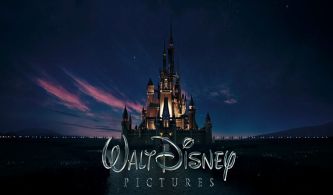
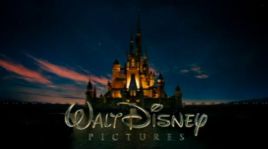
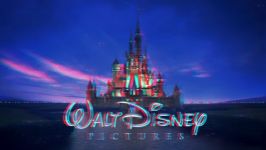
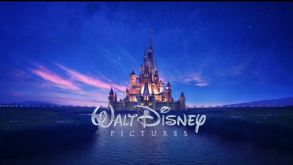
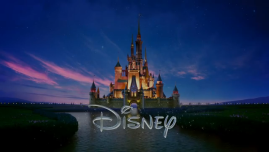
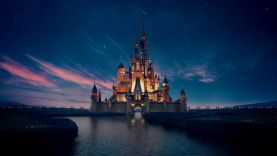
<iframe frameborder="0" height="148" src="http://wikifoundrytools.com/wiki/closinglogos/widget/unknown/70da3370ed049384775261ca6217892113a05120" width="262"></iframe><iframe frameborder="0" height="148" src="http://wikifoundrytools.com/wiki/closinglogos/widget/genericvideo/8427cd9f4515343176b26f8b52ec77eaacd0a1c6" width="263"></iframe>
Variants:
Music/Sounds: An orchestration of "When You Wish Upon a Star" composed by Mark Mancina, completely different from the 4th logo. Also, firecracker sound effects are heard when the fireworks go off. The post-November 2011 version, starting with The Muppets, is subtly different, with louder and clearer sound effects; this version is currently used as an alternate.
Music/Sounds Variants:
Editor's Note: This is one of the most beautiful logos ever, combined with the lush music, dream-like animation, and nice sound effects. While some people might be annoyed by this logo due to it plastering older logos, it's still a favorite of many. Not to mention how well it has held up over its period of usage, and still feels relevant as of this writing!
Logo captures by Eric S., iheartparamount, indycar, DaffyDuckScrewball, yctheguardie, and others
Editions by Bob Fish, V of Doom, mr3urious, Nathan B., Optimus Prime 2000, userjt, universalxdisney172, shnick1985, HiddenResearcher, McDonald's1, indycar, KPLN, JakeWilliams025, iheartparamount and Unnepad
Video captures courtesy of wwodtv, Michael Strum, Jordan Rios, TheJamesmario, Peakpasha, Aster, Sagan Blob Enterprises, Logo Archive, and UltimateHDVideostify
Background: Originally established in 1923 by Walter Elias "Walt" Disney as animation studio "Walt Disney Productions" (renamed "The Walt Disney Company" in 1986), Walt Disney Productions produced its first animated film, Snow White and the Seven Dwarfs in 1937, but never used a proper logo until 1985. Instead it used an in-credit text on most of its films. In 1983, the company was described as "Walt Disney Pictures" with the establishment of its own movie arm, and the Buena Vista text was modified to "Distributed by BUENA VISTA PICTURES DISTRIBUTION" and moved to the end credits. Disney retired the Buena Vista brand in 2007 aside from its home video distribution arm.
1st Logo
(December 21, 1937-June 21, 1985)
Background: Originally established in 1923 by Walter Elias "Walt" Disney as animation studio "Walt Disney Productions" (renamed "The Walt Disney Company" in 1986), Walt Disney Productions produced its first animated film, Snow White and the Seven Dwarfs in 1937, but never used a proper logo until 1985. Instead it used an in-credit text on most of its films. In 1983, the company was described as "Walt Disney Pictures" with the establishment of its own movie arm, and the Buena Vista text was modified to "Distributed by BUENA VISTA PICTURES DISTRIBUTION" and moved to the end credits. Disney retired the Buena Vista brand in 2007 aside from its home video distribution arm.
1st Logo
(December 21, 1937-June 21, 1985)
Logo: This is not really a logo, only an in-credit text. At the start of the film, we see the words "Walt Disney Presents" or "Walt Disney Productions Presents". At the end of the film, we see "The End, A Walt Disney Production" or "The End, Walt Disney Productions".
Variants:
- On Snow White and the Seven Dwarfs (the first film to use this logo), the text reads "A Walt Disney FEATURE Production". The end title has the RKO Radio Pictures logo in the background with the words "A WALT DISNEY FEATURE Production IN TECHNICOLOR". Until 2009, post-RKO reissue prints used the usual "The End, A Walt Disney Production" notice.
- From 1982 to 1985, the studio's theatrical product under the Disney name (except for the two shorts released in 1983, Winnie the Pooh and a Day for Eeyore, and Mickey's Christmas Carol) had simply "Walt Disney Productions" at the end of the credits. No "the end", as the practice of using these two words at the closing of films had pretty much ceased by now.
- On Popeye and Dragonslayer, the text reads as "Paramount Pictures Corporation and Walt Disney Productions present", as both films were distributed in America by Paramount and internationally by Disney.
- On some films, the movie's title is seen on the end title. Some examples include Make Mine Music, Fun & Fancy Free, Melody Time, and Treasure Island.
- On Treasure Island and One of Our Dinosaurs is Missing, notices for filming locations are added.
- Sometimes, only "The End" is seen. Some examples are The Three Caballeros and Make Mine Music.
- Song of the South does not have the "A Walt Disney Production" text at the end title.
- Even after Walt Disney's death in 1966, "A Walt Disney Production" continued to be used until 1970 (the last to use it was The Aristocats). Strangely, it was seen on Winnie the Pooh and Tigger Too, One of Our Dinosaurs is Missing, The Many Adventures of Winnie the Pooh, and Winnie the Pooh and a Day for Eeyore.
- Even after Walt Disney's death in 1966, "Walt Disney Presents" continued to be used until 1968 (the last to use it was Winnie the Pooh and the Blustery Day). Strangely, it was seen on One of Our Dinosaurs is Missing, Winnie the Pooh and Tigger Too and The Many Adventures of Winnie the Pooh (the latter two which were technically in production while Walt Disney was still alive, as he originally envisioned the first three featurettes as a feature-length film).
- "The End" was absent on Dad, Can I Borrow the Car.
- The original German print of The Rescuers (as seen on VHS releases) lacks the "The End" text of the closing title card.
- Some films, like The Reluctant Dragon,Dumbo and Saludos Amigos,have the end title containing "Distributed by RKO Radio Pictures, Inc.".
- For The Jungle Book's 1997 restoration for the 30th Anniversary Edition, the closing text ("The End - A Walt Disney Production") is white, instead of the original yellow, possibly due to a restoration coloring error.
- In foreign countries, "presents" is replaced by that country's translation (such as "Presenta" on Italian and Spanish prints).
FX/SFX: None.
Music/Sounds: Usually the opening and closing themes of the movie.
Availability: Still saved on classic Disney shorts and movies of the era, such as Snow White and the Seven Dwarfs, Dumbo, The Aristocats, Robin Hood, The Rescuers, Pinocchio, Cinderella, Peter Pan, 101 Dalmatians, Pete's Dragon, Mary Poppins, Bedknobs and Broomsticks, Saludos Amigos, Fun and Fancy Free, The Adventures of Ichabod and Mr Toad, Make Mine Music, Melody Time, The Three Caballeros, Song of the South, The Many Adventures of Winnie the Pooh, So Dear to My Heart, The Reluctant Dragon, The Fox and the Hound, The Sword in the Stone, Bambi, Alice in Wonderland, Sleeping Beauty and Lady and the Tramp, among others. The only known film to not have this in-credit is Fantasia, aside from a copyright notice appearing on the title card of the film.
Editor's Note: Will evoke fond memories of Walt Disney and his classic films, and the days of old-fashioned opening credits and "THE END" notices. Many films have memorable visuals and music to go with the themes, usually in a positive way, though some films have dramatic fanfares that could be off-putting to younger viewers.
2nd Logo (50th Anniversary)
Music/Sounds: Usually the opening and closing themes of the movie.
Availability: Still saved on classic Disney shorts and movies of the era, such as Snow White and the Seven Dwarfs, Dumbo, The Aristocats, Robin Hood, The Rescuers, Pinocchio, Cinderella, Peter Pan, 101 Dalmatians, Pete's Dragon, Mary Poppins, Bedknobs and Broomsticks, Saludos Amigos, Fun and Fancy Free, The Adventures of Ichabod and Mr Toad, Make Mine Music, Melody Time, The Three Caballeros, Song of the South, The Many Adventures of Winnie the Pooh, So Dear to My Heart, The Reluctant Dragon, The Fox and the Hound, The Sword in the Stone, Bambi, Alice in Wonderland, Sleeping Beauty and Lady and the Tramp, among others. The only known film to not have this in-credit is Fantasia, aside from a copyright notice appearing on the title card of the film.
Editor's Note: Will evoke fond memories of Walt Disney and his classic films, and the days of old-fashioned opening credits and "THE END" notices. Many films have memorable visuals and music to go with the themes, usually in a positive way, though some films have dramatic fanfares that could be off-putting to younger viewers.
2nd Logo (50th Anniversary)
(December 22, 1972-July 12, 1973)
Logo: On a red background with black moving dots, a blue version of Disney's 50th anniversary logo; a big "50" with Mickey Mouse ears on the "0" with the word "HAPPY" above it and "YEARS" below, appear and eventually change the background into a blue background with images of Disney cartoon characters, outlined in green, facing the 50. The "50" logo zooms out followed by "HAPPY" zooming out above it and "YEARS" doing the same below. Tinker Bell appears, flies around and waves her wand, changing the screen to black. The 1954 Buena Vista logo would follow.
<iframe frameborder="0" height="186" src="http://wikifoundrytools.com/wiki/closinglogos/widget/genericvideo/6c73569241ebff4ac96157a7b0c74c815770faf3" width="247"></iframe><iframe frameborder="0" height="186" src="http://wikifoundrytools.com/wiki/closinglogos/widget/unknown/2b0433709415bcdafad09ae7e2856b7b72d0592c" width="247"></iframe>
Nickname: "50 Happy Years"
Logo: On a red background with black moving dots, a blue version of Disney's 50th anniversary logo; a big "50" with Mickey Mouse ears on the "0" with the word "HAPPY" above it and "YEARS" below, appear and eventually change the background into a blue background with images of Disney cartoon characters, outlined in green, facing the 50. The "50" logo zooms out followed by "HAPPY" zooming out above it and "YEARS" doing the same below. Tinker Bell appears, flies around and waves her wand, changing the screen to black. The 1954 Buena Vista logo would follow.
FX/SFX: The several logo designs appearing, the zoom in (revealing the background), Tinker Bell flying around and the transition effect to the Buena Vista logo.
Music/Sounds: The first two bars of "When You Wish Upon a Star". An announcer (Dick Wesson) says "And now, a 50th anniversary presentation from Walt Disney Productions!". On international releases, the announcer is absent, and the music is two full tones lower.
Availability: Extremely rare. Appeared before the 1954 Buena Vista logo on the studio's films (both original and reissues) in 1973 and also appeared briefly (twice) on The Wonderful World of Disney episode "50 Happy Years". Remains intact on Charley and the Angel. Its first known appearance was on Snowball Express, and its last known appearance was on A Disney Cartoon Jubilee.
Editor's Note: TBA
3rd Logo
(October 7, 1983-December 25, 1998)
Variants:
- Typically, the text (inblue,orange,or white)is against a black background.
- Return to Oz features the "WALT DiSNEY" script logo in green, on a space-like background (and is the first to do so).
- Never Cry Wolf has the text in a blue rectangular box with a white outline around it.
- Squanto: A Warrior's Tale has the word "Presents" fades below the logo.
FX/SFX: None.
Music/Sounds: The beginning of the movie's theme. On A Far Off Place and The Three Musketeers, it's silent.
Availability: Again, on some Disney movies from the era. This logo was most often used on live-action films, often to denote more serious fare. Sometimes preceded or plastered by the 1985 logo. The logo, however, came back in 1990 on trailers. Also seen on The Rocketeer, A Far Off Place, The Three Musketeers, Squanto: A Warrior's Tale (only at the beginning of the film; the next logo appears at the end of the film), Rudyard Kipling's The Jungle Book, and Mighty Joe Young (although the next logo appears on the trailers and TV spots for said film). Also seen on trailers for White Fang, Shipwrecked, Newsies, Hocus Pocus, Cool Runnings, Iron Will, Angels in the Outfield, Jungle 2 Jungle, Rocketman, and George of the Jungle (though the actual films use the next logo instead).
Editor's Note: This tends to be regarded as overtly simple and plain for a Disney logo.
4th Logo
(June 21, 1985-December 12, 2006)
Nicknames: "The Disney Castle", "Magic Kingdom", "Sleeping Beauty Castle", Classic Castle, "The Blue Castle", "Nostalgic Castle"
Music/Sounds: The beginning of the movie's theme. On A Far Off Place and The Three Musketeers, it's silent.
Availability: Again, on some Disney movies from the era. This logo was most often used on live-action films, often to denote more serious fare. Sometimes preceded or plastered by the 1985 logo. The logo, however, came back in 1990 on trailers. Also seen on The Rocketeer, A Far Off Place, The Three Musketeers, Squanto: A Warrior's Tale (only at the beginning of the film; the next logo appears at the end of the film), Rudyard Kipling's The Jungle Book, and Mighty Joe Young (although the next logo appears on the trailers and TV spots for said film). Also seen on trailers for White Fang, Shipwrecked, Newsies, Hocus Pocus, Cool Runnings, Iron Will, Angels in the Outfield, Jungle 2 Jungle, Rocketman, and George of the Jungle (though the actual films use the next logo instead).
Editor's Note: This tends to be regarded as overtly simple and plain for a Disney logo.
4th Logo
(June 21, 1985-December 12, 2006)
<iframe frameborder="0" height="150" src="http://wikifoundrytools.com/wiki/closinglogos/widget/unknown/4e9e538213e0302a8e28995173689fa55b20cba0" width="266"></iframe><iframe frameborder="0" height="150" src="http://wikifoundrytools.com/wiki/closinglogos/widget/unknown/3c543a419c6286f302ba98c6577e9231516a282f" width="266"></iframe><iframe frameborder="0" height="150" src="http://wikifoundrytools.com/wiki/closinglogos/widget/unknown/d47eb1495baa45fdf89293857cd8a0f3a3e82424" width="199"></iframe>
<iframe frameborder="0" height="150" src="http://wikifoundrytools.com/wiki/closinglogos/widget/unknown/1c6061adcd479f70316ab98dd92e29d1da942aad" width="199"></iframe><iframe frameborder="0" height="150" src="http://wikifoundrytools.com/wiki/closinglogos/widget/unknown/6264ad95e276e3f5519e0d8e3770f48f001a8c37" width="266"></iframe>
Logo: On a blue gradient backdrop, a shower of light descends from the top of the screen, forming a stylized, segmented Cinderella/Sleeping Beauty castle. The segments seem to be spaced farther apart by the time the light reaches the bottom. Through the main gate of the castle, a white ball of light forms, then extends out to form the words "WALT DiSNEY" in the familiar corporate "Disney" logo font. The word "PICTURES", in a Lubalin Graph-Book font, fades in underneath. A ball of light then appears on the right side of the castle and draws a circular line over it.
Trivia:
Trivia:
- The Disney script font is basically based on Walt Disney's signature.
- The castle seen in this logo was actually first used by Disneyland in 1985 to promote the theme park's 30th anniversary.
- Although in 1989 and 1990, Disney switched its newer animated movies from traditional cel animation to digital ink-and-paint via its CAPS (Computer Animation Production System) software, systems, servers, work servers and desks, this logo was still animated on hand-painted cels until at least the middle of 2005, even though two digitally-animated versions of this logo debuted in 1994 and 2000.
Variants:
- In the original variant, the castle is a lavender/white gradient, and the background is indigo. However, some prints of The Black Cauldron show the castle in pure white. Some versions of the 1985-1990 variant show the castle in a light blue/white gradient.
- The size of the logo may vary.
- From 1985 until 2005, the logo is filmed and made with traditional ink-and-paint cell animation (which means that the logo was painted on several layers of production cels and animated frame by frame), while from 1995 until 2006, the logo is videotaped and made with digital ink-and-paint.
- There is a variation used from 1994 until 2006 in which the light forming the castle and the curved line's reflection are a little transparent, the flash forming the words "WALT DiSNEY" is a little brighter, and the word "PICTURES" fades in more quicker.
- Prior to 1990, the semi-circular line is drawn all the way to the bottom left. Also there is a pause after the initial glow before the shower of light descends, and the flash from the castle gate starts immediately after the castle has been formed.
- There is a variation of this logo where the animation is slow and choppy, and the "shower of light" is not as apparent (it looks more like somebody sliding a sheet of blue paper down to form the castle logo). A smoother version of this variant debuted in 1991.
- When classic Disney shorts were re-released in the 1990s, the text "A FULLY RESTORED ORIGINAL/ANIMATED CLASSIC", in the font used for "PICTURES", is shown before the logo. On The Old Mill, the text reads "A FULLY RESTORED ACADEMY AWARD WINNING ANIMATED CLASSIC" with a drawing of an Oscar statue to the left and a copyright for the A.M.P.A.S. on the bottom.
- There is a variant in which the flash that forms the "Walt Disney" text is a little slower and is shaped like an oval. This can be found on 101 Dalmatians (1996 film), the widescreen version of Lady and the Tramp (1998 WDMC release) and the 2004 release of Mary Poppins, plastering the Buena Vista logo.
- There is a short version that can be seen on Return to Oz, the Roger Rabbit short Tummy Trouble, DuckTales the Movie: Treasure of the Lost Lamp, the 1995 Mickey Mouse short Runaway Brain, Treasure Planet, and the 1980's re-issue of the 1939 Goofy short Goofy and Wilbur. It also appeared along with the Touchstone Home Video logo on very early Touchstone Home Video releases, mainly Splash, My Science Project, and Baby: Secret of the Lost Legend.
- On Oliver & Company, the original film release had the 1985 version of the castle, while the 1996 video release uses the 1990 variant.
- There is an even shorter variant that starts after the "WALT DiSNEY" text is formed. This can be seen on mid-2000s releases of some classic films (such as Bambi and Cinderella, among others), plastering over the Buena Vista logo.
- There is a variant in which the "WALT DiSNEY" text is in what appears to be "shadow" mode. It is unclear whether this is a result of film deterioration, distortion, or if this was indeed an actual variant.
- There is a variant used from 2000 until 2006 in which a seventh flag is added to the right of the castle.
- There is a variant in which the logo is a still picture. This can be found at the end of The Hunchback of Notre Dame and on 1990s re-releases of some 1940s-1950s Disney cartoons (such as Pluto's Fledgling), plastering over the 1953 Buena Vista logo.
- On a few 2003-2006 animated films such as Piglet's Big Movie and Leroy & Stitch, "PICTURES" appears with "WALT DiSNEY" instead of fading in after.
- Depending on the movie, there could be a variant which includes characters or a style from the movie (or an alternate variant of the original version). Click here for a list of these variants.
- This logo is revived on the 2013 film Saving Mr Banks, except, instead of animating as normal it appears on a classic-style title card with copyright notice etc. above the text "Walt Disney Presents" a la the 1st logo in a font similar to the signature font used by the company before the 1980s that more resembled Walt's actual signature.
FX/SFX: The "glowing castle", the "flash", and the drawing of the line.
Music/Sounds: A rendition of "When You Wish Upon a Star"; it opens with a chorus singing with a quiet brass rendition of the song's first bar, alongside sparkles evoking pixie dust, followed by an uprising flute and what sounds like a reversed cymbal crash, and then a full orchestral finish of the song's first bar ending with a flute/recorder at the very end. This was composed by John Debney.
Music/Sounds Variants:
Music/Sounds: A rendition of "When You Wish Upon a Star"; it opens with a chorus singing with a quiet brass rendition of the song's first bar, alongside sparkles evoking pixie dust, followed by an uprising flute and what sounds like a reversed cymbal crash, and then a full orchestral finish of the song's first bar ending with a flute/recorder at the very end. This was composed by John Debney.
Music/Sounds Variants:
- On some movies like The Journey of Natty Gann, Return to Snowy River, The Straight Story, the 1991 VHS of Fantasia, and the 2001 VHS of Bedknobs and Broomsticks, it is silent.
- There is a slightly re-orchestrated variant on the 1998 VHS release of The Black Cauldron.
- There is a slightly re-orchestrated theme with a choir mixed in for the short variant. Some late 1980s theatrical trailers have a voice-over saying "From the name that means magic in entertainment".
- On some 1980s theatrical trailers, a different majestic fanfare, which is not a rendition of the logo's usual theme in any form, is heard.
- The theme is re-orchestrated in a dramatically different key on 1994's White Fang 2: Myth of the White Wolf. This version was also composed by John Debney.
- Some films, such as Recess: School's Out, Jungle 2 Jungle, and The Princess Diaries, use a more dramatic re-orchestration.
- On the 1995 short Runaway Brain, the logo's theme is re-orchestrated and sounds more like the 1988 Walt Disney Television logo.
- At the end of D3: The Mighty Ducks, it uses a flash sound and then a laser sound.
- At the end of movies, this logo is usually silent or has the ending theme of the movie playing over it.
- Some films, such as Flight of the Navigator, The Rescuers Down Under, as well as the 1998 VHS of The Little Mermaid, have the music off-sync with the logo's animation.
- On re-releases of Disney animated shorts in the 1990s, the logo is silent until the end, when the 1950s Buena Vista music pops up before the cartoon starts.
- On some films, the film's opening score incorporates the first few bars of "When You Wish Upon a Star" when the logo appears.
- On one print of Old Yeller, due to a plastering mistake, we hear the film's custom Buena Vista fanfare playing over at the end of the logo.
- On some films, such as The Emperor's New Groove, Mulan, Pocahontas, and The Hunchback of Notre Dame, the opening theme of the movie is heard.
- On The Santa Clause 2, the flute/recorder isn't heard.
Availability: Was very common in the past, as it was used for 21 years, but is now uncommon, bordering on rare, as many recent prints (both TV and home media) have plastered this with the 2006 logo.
- The first film to use this was Return to Oz, and this logo has been put in front of almost every subsequent Disney film until the logo's retirement on current releases in late 2006. The first animated film to use this logo was The Black Cauldron.
- The 1990 "filmed" version of this logo was first seen on a trailer for The Little Mermaid and made its final appearance on a trailer for Chicken Little.
- Starting in the late 1980's, it was also used on newer prints of classic films, such as Cinderella (starting in 1988), Peter Pan (starting in 1990), Fantasia (starting in 1991), 101 Dalmatians (starting in 1992), Snow White and the Seven Dwarfs (starting in 1993), The Fox and the Hound, Pinocchio, Sleeping Beauty (all starting in 1995), The Aristocats (starting in 1996), Bambi, Mary Poppins, Fun and Fancy Free, Old Yeller, The Jungle Book (all starting in 1997), Lady and the Tramp (starting in 1998), The Rescuers (starting in 1999), Alice in Wonderland (starting in 2000) and Bedknobs and Broomsticks (starting in 2001) among others.
- The 1994 "videotaped" version first appeared (full version) on The Lion King, released on June 15, 1994, and made its final theatrical appearance at the end of The Wild, released on April 14, 2006.
- The short version of the 1994 "videotaped" version was first seen on the 1995 Mickey Mouse short Runaway Brain, released on April 7, 1995.
- The 2000 version was first seen on The Little Mermaid II: Return to the Sea, released on September 19, 2000 (it was also the first Disney Direct to video movie to use this logo), and made its final appearance on The Fox and the Hound 2, released on December 12, 2006.
- The last films to use this logo in theaters were The Wild and The Shaggy Dog.
- The last direct-to-video releases to use this were Bambi II, Brother Bear 2, and The Fox and the Hound 2.
- It was also seen on trailers for Toy Story as well, but the film itself uses the 6th logo.
- The current Blu-ray/DVD release of The Great Mouse Detective uses the 1994 variant of this logo, replacing the 1985 and 1990 logos.
- It also appeared on pre-2002 prints of The Lion King, as the 2002 IMAX version uses the 7th logo (the original 1995 VHS of The Lion King preserves this logo however).
- Also, even though most recent prints of classic films use the 8th logo, it is strangely seen on the 2008 release of The Aristocats, The Diamond Edition DVD of Lady and the Tramp and the Bambi: The Story Behind the Story feature on The DE DVD of Bambi (with the RKO pictures custom logo theme playing underneath). HBO Asia airings of some pre-2006 movies still use this logo up to now.
- It's also preserved on TV airings, DVD/Blu-ray/digital releases, and theatrical reissues of Hocus Pocus.
- VHS and earlier DVD releases keep this logo intact.
- Don't expect to see this on anything from Studio Ghibli, as it only has the aforementioned company's logo and during this logo's usage Disney used the Buena Vista name on home video releases of Ghibli movies.
- The logo also appears on some foreign Blu-Ray releases of Flight of the Navigator, including a German release from Splendid Entertainment and the 2012 and 2019 releases from Second Sight Films, which presumably use American prints as Disney doesn't hold the video rights overseas.
Editor's Note: Probably the most beloved Disney logo, due to its longevity and appearing at the front of the studio's classic films.
5th Logo
(April 15, 1988)
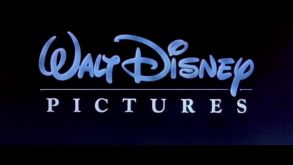 <iframe frameborder="0" height="167" src="http://wikifoundrytools.com/wiki/closinglogos/widget/genericvideo/c08149a479212585533244cd8c9b72fb8dd76abb" width="296"></iframe>
<iframe frameborder="0" height="167" src="http://wikifoundrytools.com/wiki/closinglogos/widget/genericvideo/c08149a479212585533244cd8c9b72fb8dd76abb" width="296"></iframe>
Logo: On a very shady cadet blue gradient background, the regular "WALT DiSNEY" script, in a textured baby blue hue, writes itself onscreen (think the 1986 Walt Disney Home Video logo). The word "P I C T U R E S" fades in below the script in a Times font, with each of the letters spaced-out. A dot of light appears below the script and extends to form a line between the script and text.
FX/SFX: Typical 1988 animation.
Music/Sounds: None.
Availability: Only known to appear at the end of Return to Snowy River (the 4th logo appears at the beginning). Also seen on a TV spot for said film.
Editor's Note: Quite an oddity in general, given its usage and obscurity.
6th Logo (Pixar Variant)
(November 19, 1995-June 29, 2007)
(April 15, 1988)
 <iframe frameborder="0" height="167" src="http://wikifoundrytools.com/wiki/closinglogos/widget/genericvideo/c08149a479212585533244cd8c9b72fb8dd76abb" width="296"></iframe>
<iframe frameborder="0" height="167" src="http://wikifoundrytools.com/wiki/closinglogos/widget/genericvideo/c08149a479212585533244cd8c9b72fb8dd76abb" width="296"></iframe>Logo: On a very shady cadet blue gradient background, the regular "WALT DiSNEY" script, in a textured baby blue hue, writes itself onscreen (think the 1986 Walt Disney Home Video logo). The word "P I C T U R E S" fades in below the script in a Times font, with each of the letters spaced-out. A dot of light appears below the script and extends to form a line between the script and text.
FX/SFX: Typical 1988 animation.
Music/Sounds: None.
Availability: Only known to appear at the end of Return to Snowy River (the 4th logo appears at the beginning). Also seen on a TV spot for said film.
Editor's Note: Quite an oddity in general, given its usage and obscurity.
6th Logo (Pixar Variant)
(November 19, 1995-June 29, 2007)
<iframe frameborder="0" height="148" src="http://wikifoundrytools.com/wiki/closinglogos/widget/unknown/93166d2dc812459a789a2dbd159d81be2061af09" width="262"></iframe><iframe frameborder="0" height="148" src="http://wikifoundrytools.com/wiki/closinglogos/widget/genericvideo/0ba1a45dd96e54269d2e9b6c0496b8238f66661b" width="263"></iframe>
Nicknames: "The Pixar Castle", "Pixar Kingdom", "Sleeping Beauty Castle 3D", "CGI Disney Castle", "The Disney Castle II"
Logo: On a blue background, the camera flies out underneath a 3D CGI castle, with flags flapping on the top. When the logo zooms out, the logo proceeds as normal, but the "WALT DiSNEY" text is more three-dimensional, and the ball of light drawing the line over the castle drops what seems to be pixie dust. Along with that, the ball of light draws the line over the castle much slower than the 4th logo.
Trivia: This is pretty much a CGI remake of the 1986 logo, although the way the castle appears is much different.
Logo: On a blue background, the camera flies out underneath a 3D CGI castle, with flags flapping on the top. When the logo zooms out, the logo proceeds as normal, but the "WALT DiSNEY" text is more three-dimensional, and the ball of light drawing the line over the castle drops what seems to be pixie dust. Along with that, the ball of light draws the line over the castle much slower than the 4th logo.
Trivia: This is pretty much a CGI remake of the 1986 logo, although the way the castle appears is much different.
Variants:
- On Toy Story, the logo zooms out to reveal Andy's room once the ball of light finishes drawing the line over the castle.
- On trailers and on Monsters, Inc., the logo is shortened to when the arc is formed over the castle.
FX/SFX: Very nice CGI from Pixar!
Music/Sounds: A bombastic/majestic fanfare composed by Randy Newman.
Music/Sound Variants:
Music/Sounds: A bombastic/majestic fanfare composed by Randy Newman.
Music/Sound Variants:
- We hear what sounds like a more bombastic version of the fanfare, and once the line is finished being drawn over the castle by the ball of light, only the rest of the notes to the third to last note of the fanfare play. The last two notes are played by a trumpet. This is only used on the Toy Story variant.
- The Pixar films directed by Brad Bird (The Incredibles and Ratatouille), as well as Monsters, Inc., have that film's opening theme.
- On Cars, the fanfare was re-orchestrated to put a little more of the logo in at the same duration of the logo's closing re-appearance.
- At the end of movies using this logo, we hear flapping flags and the sound of pixie dust as the ball of light draws the line over the castle, or the ending theme of the movie.
Availability: Like before, it was quite common during its usage, being seen on all Disney/Pixar productions from Toy Story to Ratatouille (the last film to use this logo). However, nowadays it's borderline rare; it has since been retired since recent/current Disney/Pixar productions now use the the 8th logo. The Blu-Ray and 3-D re-releases of these films (such as the first two Toy Story films, Monsters, Inc., and Finding Nemo 3-D) have this plastered with the 8th logo. The same goes with most recent airings of these films (with exception of some channels such as HBO Asia). It was left intact on the 2016 Starz airings of Ratatouille and is surprisingly left intact on the Amazon Instant Video print of Monsters, Inc. Like before, earlier VHS and DVD releases of these movies keep this logo intact, also retained on the 2018 Ultra HD of The Incredibles.
Editor's Note: A nice CGI update of the 1986 logo, which is fondly regarded by fans of older Pixar movies.
7th Logo
(May 19, 2000-April 14, 2006)
(May 19, 2000-April 14, 2006)
Nicknames: "Hidden Disney Castle", "The Flare", "The Disney Castle III", "The Flashlight", "Golden Disney Castle"
Logo: On a black background, we see the orange text "WALT DiSNEY PICTURES" wiping in from left to right. Then we see an orangelight/flareshining on the logo, illuminating it with a trail effect that rises from the top of the letters "E" and "Y" in "DiSNEY", making its way around to reveal the castle in metallic orange. The entire logo wipes away as soon as the light trail effect illuminates away.
Variants:
- On trailers, the logo appears to be in a bronze-like color.
- The closing variation of this logo is still. Also, the castle is in a gradient scheme.
- On some movies, the full animation is being used as a closing variant.
FX/SFX: The text wiping in, the light effect, and the logo wiping out. The effects used are rather unique for their time.
Music/Sounds: None or the opening theme of the movie. On Holes, it has the sound of a fire being lit.
Availability: Fairly common. Seen on most but not all live-action Disney films from the era such as 102 Dalmatians, Sky High, National Treasure, Holes, Glory Road, The Chronicles of Narnia: The Lion, the Witch, and the Wardrobe, Disney's The Kid, and Pirates of the Caribbean: The Curse of the Black Pearl. Also seen on Disney's animated filmsDinosaur (which was the first film to use this logo) andBrother Bear, as well as the 2002 IMAX re-release and 2003 2-Disc DVD release of The Lion King; However, most recent prints plaster it with the next logo; as before, however, the logo is intact on VHS and DVD releases of these films.
Editor's Note: A stylish and well-done adaption of the original Disney castle logo for older-skewing films.
8th Logo
(July 7, 2006- )
(July 7, 2006- )






<iframe frameborder="0" height="148" src="http://wikifoundrytools.com/wiki/closinglogos/widget/unknown/70da3370ed049384775261ca6217892113a05120" width="262"></iframe><iframe frameborder="0" height="148" src="http://wikifoundrytools.com/wiki/closinglogos/widget/genericvideo/8427cd9f4515343176b26f8b52ec77eaacd0a1c6" width="263"></iframe>
Nicknames: "CGI Magic Kingdom", "The Disney Castle IV", "Cinderella Castle", "Ultra Majestic Castle", "The Happiest Place on Earth", "CGI Disney Castle II", "Sleeping Beauty Castle 3D II"
Logo: We fade into a view of a night sky, with a star somewhere on the screen and the clouds on the bottom. We then start flying down through the clouds with the camera. We then pan with the camera down to a very clear view of a river, with a train running down the railroad track. We then fly with the camera past a flag, and pan down as we see some fireworks going off, only to find the castle completely redone in CGI. The fireworks are almost finished when we almost reach a comfortable position in front of the castle. When the fireworks finish, a very small dot (you will have to look closely if you want to see it) appears way closer to the castle and then moves to the right side. The dot then draws a line over the castle as we are slightly panning, and it is almost finished when we are in a comfortable position in front of the castle. When the dot is finished drawing the line, "WALT DiSNEY", in its well-known script (although it is slightly different to the 1985 font), fades in in front of the main gate of the castle. When it does, "P I C T U R E S",fades in below the script.
Logo: We fade into a view of a night sky, with a star somewhere on the screen and the clouds on the bottom. We then start flying down through the clouds with the camera. We then pan with the camera down to a very clear view of a river, with a train running down the railroad track. We then fly with the camera past a flag, and pan down as we see some fireworks going off, only to find the castle completely redone in CGI. The fireworks are almost finished when we almost reach a comfortable position in front of the castle. When the fireworks finish, a very small dot (you will have to look closely if you want to see it) appears way closer to the castle and then moves to the right side. The dot then draws a line over the castle as we are slightly panning, and it is almost finished when we are in a comfortable position in front of the castle. When the dot is finished drawing the line, "WALT DiSNEY", in its well-known script (although it is slightly different to the 1985 font), fades in in front of the main gate of the castle. When it does, "P I C T U R E S",fades in below the script.
Variants:
- A closing variant which starts off with the line being drawn over the castle by the dot is seen at the end of some films. This is also used as the opening logo on current prints of Monsters, Inc.to plaster the 1995 logo.
- On 3D releases, the "WALT DiSNEY" (or, in later years, "DiSNEY") text zooms in more to create the 3D illusion when we are wearing 3D glasses. This variant also appears at the start of the 2D live-action film Cinderella.
- One variation only shows the word "DiSNEY" in its well-known script. This is used on newer films from the studio, starting with The Muppets, released on November 23, 2011. This would later replace the previous standard variant (which featured the entire company name "WALT DiSNEY PICTURES"), as newer films from the studio used this variant of the logo or featured variations of it. This change was made to fit into mobile phones and other devices similar to the iPod.
- Another variant is where the "WALT DiSNEY" text is there while the curved line is drawn.
- On Disney Blu-ray releases, the word "DiSNEY" is absent from the logo. Also, the logo is a still picture except for the river, which continues to flow like normal. This is only seen as a loading screen when the Blu-ray starts.
- Very rarely, this has been shown in open matte. A 4:3 open matte variant can be seen on the 2008 DVD of 101 Dalmatians, and the full 16:9 open matte version has been seen on a video of the opening titles of Enchanted as animated by Weta Digital and might be seen on HDTV prints thereof.
- On ABC's broadcast of Toy Story 3, the logo starts where the flag is revealed and the fireworks start.
FX/SFX: The camera flying and panning down to reveal the castle. This logo has beautiful, mind-blowing CGI animation done ironically not by Disney, or even Pixar, but by Weta Digital and yU+co.
Music/Sounds: An orchestration of "When You Wish Upon a Star" composed by Mark Mancina, completely different from the 4th logo. Also, firecracker sound effects are heard when the fireworks go off. The post-November 2011 version, starting with The Muppets, is subtly different, with louder and clearer sound effects; this version is currently used as an alternate.
Music/Sounds Variants:
- On Pirates of the Caribbean: On Stranger Tides, it is their respective music cue, along with the sounds of the fireworks, river boat and water flowing.
- Otherwise, the opening music plays over the logo, with all other sounds silent, this can be seen on Moana, Frozen and Inside Out, among other films.
- The closing variant is silent on some films, while on other films, the sound of fairy dust is heard over the closing variant.
- On Coco, a mariachi rendition of "When You Wish Upon a Star" plays over the logo.
Availability: Very common. It was first seen on Pirates of the Caribbean: Dead Man's Chest (although on a trailer for the movie, the 7th logo is shown instead). Current on recent Disney films aswell as direct-to-video titles. It also can be seen on Pixar productions starting with WALL-E. The version with the full company name "Walt Disney PICTURES" initially made its final appearance on the direct-to-DVD film Treasure Buddies, released on January 31, 2012, though it later made a surprise appearance at the end of The Lone Ranger, released on July 3, 2013 (only on the theatrical release, though). Also starting in the late 2000's, it appeared at the end of classic Walt Disney movies, shorts and pre-2008 Pixar fims, such as Sleeping Beauty, 101 Dalmatians (starting in 2008, on 101 Dalmatians, the logo is also at the start of the film), Toy Story, Toy Story 2, Pinocchio, Dumbo, Snow White and the Seven Dwarfs (all starting in 2009), Beauty and the Beast (starting in 2010), Bambi, The Lion King, (both starting in 2011, also on Bambi, the logo plasters over the original RKO logo at the start), Finding Nemo, Cinderella (starting in 2012), Monsters Inc, Aladdin, Peter Pan, The Little Mermaid (staring in 2013) Hercules (the Netflix print restores the 6th logo) and The Jungle Book (starting in 2014), among others. It also appears on newer TV airings of movies and Blu-Ray discs as well (oddly enough, the recent HBO Asia airings of most pre-2006 Disney films have the original Disney logos intact). This does not appear on anything that they merely distributed such as the films from Marvel and Lucasfilm Ltd. Seen also on some Indian films produced by this company like <a href="https://youtu.be/66F2GKHI2R0?t=103" target="_self">Khoobsurat</a>. This also appears preceding the Studio Ghibli logo on the 2010 DVD releases of their output, such as Ponyo, and is even surprisingly retained at the end of the UK DVD release of the movie, even though Optimum Releasing distributed the film there.
Editor's Note: This is one of the most beautiful logos ever, combined with the lush music, dream-like animation, and nice sound effects. While some people might be annoyed by this logo due to it plastering older logos, it's still a favorite of many. Not to mention how well it has held up over its period of usage, and still feels relevant as of this writing!
_______________________________________________________________
Copyright Stamps: Here is some information about the copyright stamps on the Disney films:
Copyright Stamps: Here is some information about the copyright stamps on the Disney films:
- 1930-1931: Copyright © by Walter E. Disney
- 1931-1940: Copyright © by Walt Disney Productions, Ltd.
- 1940-September 17, 1985: Copyright © by Walt Disney Productions
- July 2, 1986-March 8, 1996: Copyright © by The Walt Disney Company
- April 12, 1996-present: Copyright © by Disney Enterprises, Inc.
- November 25, 1998-present: Copyright © by Disney Enterprises, Inc./Pixar Animation Studios (on Pixar films).

